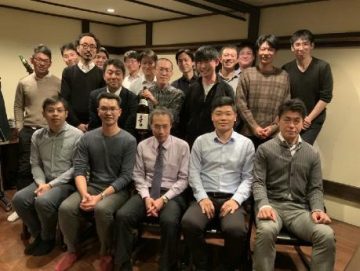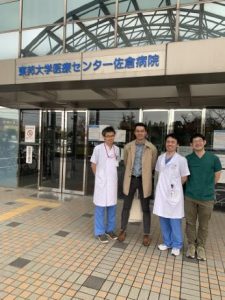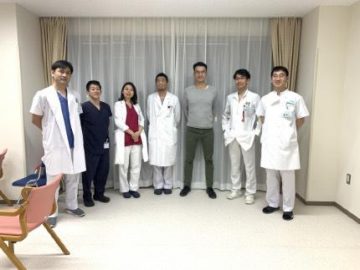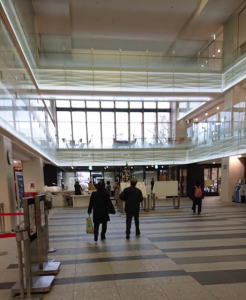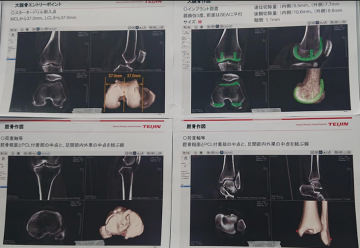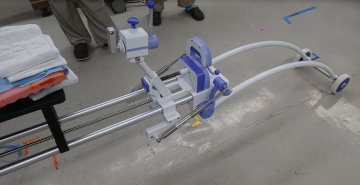Exchange Fellowship – 台湾からのFellowの先生をお迎えしました
更新日 2020.1.15
この度、Japan-Taiwan Exchange Fellowshipの一環として、台湾より Chiu 先生、Tseng先生の両名をお迎え致しました。
研修中は当院ならびに多くの関連病院での手術や外来を見学され、症例カンファレンスにも積極的にご参加いただき、また余暇日には県内を観光されるなど非常に濃密な時間を過ごしていただき、双方にとって国際交流のいい機会となったと感じております。
Traveling fellowship in Chiba, 2019
Chiu, Ping-Yeh. M.D.
Chang Gung Memorial Hospital, Linkou, Taiwan
It has been years that doctors from Taiwan and Chiba, Japan share the experiences in orthopedics in the exchanging program. I first heard the program 2 years ago. At that time, my colleague, Dr. Kao, went to Chiba for the program. He told me that it was an amazing experience to really participate in the clinical practice in Japan.These experiences changed his ways of practice after he returned. Since then, I’ve been waiting for the opportunity to get to Chiba. On December 1, 2019, the journey started.
Chiba University Hospital, Orthopedics
Chiba University Hospital is famous for its orthopedic department, especially in the spine area. With the lead of Professor Ohtori, accompanied with Dr. Orita and Dr. Inage, many skillful spine surgeons and extraordinary studies came out from this department. I was honored to have met them once when I was attending a conference guesting Dr. Hynes 2 years ago, and was pleased to be meeting them again this time. During my stay in the Chiba University Hospital, I observed different kinds of surgeries, cervical laminoplasty, lumbar splitting laminectomy, balloon kyphoplasty, intradural extra medullary tumor excision, and luckily, the L5/S1 OLIF surgery. I was impressed that surgeons and nurses here worked as a team to provide the best care for patients. The surgical indications were strict and consistent. The surgery was always performed delicately. For the OLIF, I do perform some in my own practice, but I have never done this in L5/S1, partly because of the lack of appropriate implant in Taiwan and relatively high risk. Doctors there told me that the L5/S1 OLIF was also rare to them, so I was very lucky to see this. During the surgery, it did bleed when they try to insert the trial cage. They responded quickly and the surgery was then completed with no serious complications. I heard that the patient recovered soon and well after it. After this, I can say the outcome after OLIF is good, but still I will not do this in L5/S1 even if the implants were available in Taiwan.
Toho University Hospital, Orthopedics
At the Toho University Hospital, I met Dr. Takahashi and Dr. Saito. They were very generous and kind to me and also performed surgery delicately. I saw an ACCF and a lumbar decompression with unilateral approach and bilateral decompression using tubular retractor. What impressed me the most that during the ACCF surgery, they could make the surgical field very clear without much bleeding. Total blood loss for the surgery was less than 100ml, and they finished the surgery within 3 hours. They shared many pitfalls in performing this kind of surgery. It benefits me a lot.
Seirei Sakura Hospital, Orthopedics
This hospital is famous for spinal deformity correction. I saw many fancy and high-tech facilities here, such as O-arm, navigation system, Smart-link spinal correction system, etc. I do envy them and also feel lucky for the patients here for having these modern equipments that helped improving the surgical outcomes and safety. The spine team, led by Dr. Kotani, put in lots of effort to shorten the surgical time, minimize the intra-operative blood loss and simplified the procedure to correct deformity. During my visit, I shared some of our experiences in treating spine infection, and the national health insurance in Taiwan to the staff here. Differences in culture or policies do exist, but the goal to treat patients and care patients remains the same across nations.
Chiba Children’s Hospital, Orthopedics
We went to this hospital to see a special surgery: intra-medullary arthroscopic resection of physeal bar in treating growth arrest of long bone. Dr. Saisu is famous for this surgery, and has a very good relationship to my senior, Prof. Chang. He treated us so kindly and also showed us his little patients. I was very impressed that the doctorpatient relationships were so good here, and also surprised that it felt like going through the chapter titled pediatric orthopedic diseases in textbook after an evening ward round with Dr. Saisu. Dr. Oikawa went to Taiwan years ago in the same exchanging program. I was very happy to have met him. Fewer orthopedic doctors in Taiwan were willing to do pediatric orthopedics because of hard-working, long-term treatment, and relative poor prognosis and outcomes. I always admire those who take pediatric orthopedics as their majors.
In my 2-week visit, though not long, I took in schedules covering various aspects of clinical orthopedics. Apart from work, I got the change to visit Choshi, the east part of Chiba during weekends. I have been to Japan for more than 10 times, but I have never gone to a country side like Choshi. The hot spring and the seafood there were awesome. Walking along the beach-side under the sunshine was delightful. Christmas was close to our stay in Chiba, I also went to Tokyo for sight-seeing, for those fabulous Christmas decorations and lights. All the illuminations and shows can only be memorized once you see them in person. I was pleased to caught up with doctors and friends I’ve known before, and made some more friends during my visit. I had an unforgettable trip here. Thank you my friends!
Thanks a lot for your generosity and hospitality. It will be more than happy if we can get together again in the future.
Chiba University Hospital Fellowship
1st Dec – 15th Dec 2019
Tzu-Hao Tseng
Before the fellowship, I had been looking forward to Chiba University Hospital for a year. All my colleagues participated in the program before told me they learned a lot. I really appreciate having the change to visit Chiba University Hospital which is famous for the department of orthopaedic surgery.
It was my first experience visiting a hospital in Japan. Before it, I had no idea about the health care system in Japan, and I was very impressed by it during this fellowship. The system provides high quality of medical services with relatively low cost for the Japanese citizens. Compared to our practice in Taiwan, there are a lot of differences. First, the preoperative planning and evaluation is much more complete. For example, there were CT scans for every total joint arthroplasty (TJA) patient. The pre-operative templating was done based on the CT images. In contrast, we only have X rays for most of the TJA patients in Taiwan. Therefore, the preoperative planning must be more precise in Japan. Second, implants with more advanced materials are more popular. These implants include highly crosslinked PE (HXLPE) in total knee arthroplasty (TKA), biodegradable suture anchors in shoulder arthroscopic surgeries, reverse shoulder arthroplasties, and so on. In Taiwan, the costs of these advanced implants are not covered by the National Health Insurance. Third, the patients stay longer in the hospital. The hospital stay is about 2-3 times of the duration in Taiwan. Generally, all these differences are beneficial to the patients and warrant high-quality medical services.
During these two weeks, I joined different groups and watched a lot of operations. All of them are highly specialized and very skillful in their own field. With the joint group, I watched the direct anterior approach for total hip arthroplasty. The traction table is a terrific device which largely simplify the procedure; With the knee group, I watched almost all types of knee surgeries, including ligament reconstruction, meniscus medialization, high tibial osteotomy and total knee arthroplasty; With the shoulder group, I watched a lot of rotator cuff repair and reverse shoulder arthroplasties. I was very impressed with the speed of their operations; In Children’s hospital, I watched intramedullary scopic surgery for physeal bar excision. I have never seen the same operation before; All the surgeons treated me very well, shared their experience and discussed the differences between our practice. These experiences are very inspiring to me and help me polish my skills in the future. We participated in an academic conference in 14th Dec. Although most of the participants reported their studies in Japanese, I could realize from the conference that clinical and basic researches are both emphasized. That’s the reason why there are a lot of high-quality orthopaedic papers from Chiba University Hospital.
The weather in Japan was not freezing and it’s comfortable to me. I went to Tokyo to meet my friends in the weekends. The maple trees and yellow Ginkgo trees were quite beautiful and there were always a lot of tourists. Because it’s near Christmas, the Christmas lights were brilliant at night. I also tasted a lot of delicious Japanese food, such as Sashimi, ramen noodles, eel rice, Takoyaki, Tankatsu, and so on.
This fellowship is an unforgettable experience to me. Finally, I would like to thank Dr.葉 and Professor Ohtori for providing us this precious opportunity and everyone I met in Japan for their great kindness.



